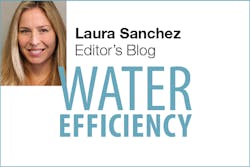What exactly does “navigable” mean? Vague definitions of which bodies of water are protected by federal agencies have confounded policy makers for decades. In 1972, the Clean Water Act gave federal authorities the power to regulate pollution in “navigable waters.” The job of determining which of those waters the policy referred to, however, was left to the Environmental Protection Agency and the Army Corps of Engineers. Is “navigable” large enough to accommodate a boat? What about smaller streams, wetlands, or intermittent systems that feed into drinking water sources?
In 2015, the Waters of the US rule, or WOTUS, built upon the existing Clean Water Act policy by expanding the types of waterways protected by the federal government to include smaller streams that drain into major rivers, bays, and drinking water sources. But since its enactment, the rule has faced opposition by farmers, developers, the energy industry, and Republican lawmakers who argue that it places excessive restrictions on what landowners can and can’t do on their property.
Donald Trump made the Waters of the United States rule a high-profile issue during his campaign. And on February 28, he signed an executive order that directs the repeal of the WOTUS rule and its replacement with a revised policy that restricts the bodies of water that are subject to pollution regulations. Limiting the power of the Environmental Protection Agency (EPA) to enforce clean water laws will transfer increasing responsibility to individual states.
Supporters of the WOTUS rule are concerned that individual states simply don’t have the resources to ensure healthy streams and clean drinking water. “How land is managed in one state will affect what happens downstream. When we think about water management, we have to think about the entire watershed,” Durelle Scott at Virginia Tech told New Scientist. “Water runs downhill. Wherever you are in a river system, it doesn’t matter when it crosses state lines,” he explained.
The EPA, under Scott Pruitt’s direction, will have to research and propose a replacement rule that is supported by technical and legal arguments and can be proven superior to the existing policy in court. Which water systems do you believe the federal government should protect?
